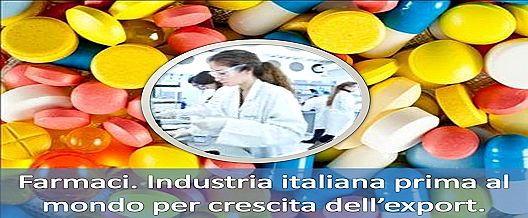IT IS THE FIRST ITALIAN AREA FOR ABROAD SALES, SECOND FOR NUMBER OF EMPLOYEES AND INVESTMENTS AND ABLE TO EMPLOY ABOUT 15,000 PEOPLE. THE TREND TRAVELS AT “CHINESE” GROWTH RHYTHMS MANY BIG BIG INVOLVED EVEN SMES TAKE OFF
Christian Benna
Milan In Lazio, pharmaceuticals are bursting with health. The latest crisis, that of 2011, which led to corporate restructuring, and also a severe policy of cuts, concentrated above all on scientific representatives, seems to have been completely absorbed. So much so that today it is the first Italian region for the export of medicines, second for the number of employees and investments, and able to give employment to around 15,000 people (20,000 with related industries) in around 50 companies. According to Farmindustria, at the end of 2013, exports from the sector now exceeded 7 billion, bringing the territory into the top 10 of European pharmaceutical regions. And the trend travels at a “Chinese” growth rate. Exports from the region grew by 15% in 2013 and by 18% on average per year since 2008, while the other sectors recorded a decrease of -1%. Of course, some industrialists would argue that, without the incessant rush to foreign markets, the crisis would also have knocked out pharmaceuticals, targeted by the increase in costs and cuts in hospital spending. And yet, that drug hub that was established in the 1960s seems to resist any recession, or at least proves capable of transforming itself and adapting to new economic conditions. There was no shortage of farewells, such as those of the nineties, when some multinationals left the territory, or the 2011 personnel reductions at Pfizer, Warner Chilcott, Merck Sharp & Dohm, Sigma Tau. However, the parable of the Lazio pharmaceuticals, even in the uphill seasons, continues on the edge of growth. Suffice it to say that at the beginning of the 1960s there were 300 employees in the sector in Latina, today there are 5,000. In Rome, from just over 4,000 in 1961, they passed to 8,000; Frosinone and Rieti, previously absent from the geography of pharmaceutical employment, have respectively 2,000 and 250 employees. And Rome and Latina are the second and third provinces of Italy in terms of number of employees, after Milan. Overall, the pharmaceutical industry is worth 10% of regional manufacturing employment, about 20% of investments, 32% of graduate workers. In Latina it is the first sector by number of employees (20% of the total), graduates (54%), presence of women (30%) and investments (34%). Compared to the total exports of the manufacturing industry, pharmaceuticals account for 76% in Latina, 58% in Frosinone, 16% in Rome, 53% in Rieti (42% is the Lazio average). An industrial fabric which, however, must be valorised, according to
